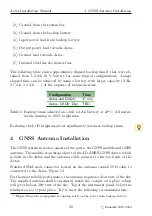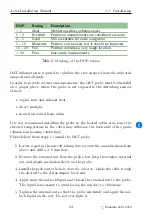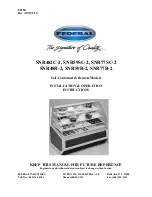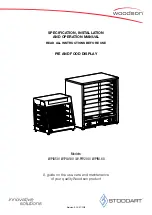
Aetos Installation Manual
8.2
The CAN Topology
T
T
120 Ω
120 Ω
main bus
N
1
N
2
N
N
40 m (max)
Figure 24:
CAN line/bus topology principle used by Kanardia
Most of the Kanardia devices have two CAN bus ports that allow devices to
be daisy-chained to each other. Main bus enter in one port and exits in the
other. Port order is not important – both are equal. Inside device housing
there may be more internal modules. In the case of Aetos, there is AIRU
module (AD-AHRS-GPS module) and Aetos electronic board module. Both
are internally connected to the main CAN bus.
main bus
Nesis Airu
Nesis master
Circuit
Some device
Figure 25:
Device daisy-chaining, where devices has two CAN ports.
Daqu and Magu devices are a bit special. They usually appear on each end
of the main bus. They have a built-in 120 Ω resistor, which is used as a CAN
bus terminator. This means no extra terminator is required.
In most cases the main CAN bus is pretty short. It is typically less than 4
m long. For such short lengths one terminator suffices – there is no signal
deterioration. Figure 26 illustrates the Aetos basic kit topology.
If Daqu is omitted from the bus, then CAN communication between Aetos
and Airu module does not work as there is no terminator present. In this
case, one terminator plug must be inserted instead.
8.2.1
T-Junction
Certain devices (SERU – autopilot servomotor, for example) have only one
CAN connector and they can’t be daisy-chained. In this case, a T-junction is
needed. T-junction is a simple element with three RJ45 connectors.
34
©
Kanardia
2019–2020










































